- Home
- Ellen Datlow
Echoes
Echoes Read online
Thank you for downloading this Simon & Schuster ebook.
* * *
Get a FREE ebook when you join our mailing list. Plus, get updates on new releases, deals, recommended reads, and more from Simon & Schuster. Click below to sign up and see terms and conditions.
CLICK HERE TO SIGN UP
Already a subscriber? Provide your email again so we can register this ebook and send you more of what you like to read. You will continue to receive exclusive offers in your inbox.
Publisher's Notice
The publisher has provided this ebook to you without Digital Rights Management (DRM) software applied so that you can enjoy reading it on your personal devices. This ebook is for your personal use only. You may not print or post this ebook, or make this ebook publicly available in any way. You may not copy, reproduce, or upload this ebook except to read it on your personal devices.
Copyright infringement is against the law. If you believe the copy of this ebook you are reading infringes on the author’s copyright, please notify the publisher at: simonandschuster.biz/online_piracy_report.
ACKNOWLEDGMENTS
Thank you to Stefan Dziemianowicz, Genevieve Valentine, and Robert Killheffer for their help.
Thank you to Joe Monti, for his patience and constant encouragement.
—E. D.
INTRODUCTION
I don’t believe in ghosts, but I love ghost stories and I suspect I’m not the only reader to make this confession. The trick of any story (and especially a tale of the supernatural) is to draw us into an unfamiliar world—or a world in which the familiar is made . . . other . . . and convince us to reside there for at least as long as the story lasts. Any well-told story will do that. Ghost stories differ by transporting us to a world where we might actually fear or be disturbed by what we find there.
The ghost story is probably one of the oldest tales told around campfires. Why might this be? It could be because the most persistent concern for many people is whether there is life after death—and, if there is, what that life might be like. None of us—unless one believes the stories of those whose hearts have stopped, only to start again after a brief interval—can really know what happens after we die.
Ghost stories have been a popular and powerful form of fiction for centuries, dating back to Homer, the Augustan poets Vergil and Ovid, and Pliny. What’s more, the ghost story has never been the exclusive province of writers associated with the supernatural; it has inspired writers working in many different literary traditions, among them William Faulkner, Edith Wharton, Graham Greene, Oscar Wilde, Robert Graves, Washington Irving, Kate Chopin, Muriel Spark, and John Masefield.
From the ghost of Hamlet’s father and the ghost of Banquo appearing unexpectedly at dinner in Macbeth through the disturbing hauntings of many classic weird tales—The Turn of the Screw by Henry James, “A Rose for Emily” by William Faulkner, the short stories of M. R. James, “A Little Place Off the Edgware Road” by Graham Greene, the self-described “strange stories” of Robert Aickman, and The Haunting of Hill House by Shirley Jackson—ghost stories have continued to maintain their hold on the literary imagination.
While researching the history of the ghost story I discovered that even though several volumes of anthologies from the nineteenth and even early twentieth century proclaim the stories within to be ghost stories, most are not. Apparently, at a particular point in English language literature, the “ghost” story served as a catchall phrase for any kind of supernatural fiction.
While the ghost story seemed to dip in popularity in the last few decades of the twentieth century, writers have continued to produce memorable ones, especially since 2000. Some examples of the best in novel form are House of Leaves by Mark Danielewski, The Little Stranger by Sarah Waters, The Loney by Andrew Michael Hurley, Slade House by David Mitchell, the macabre tales of Susan Hill, An English Ghost Story by Kim Newman, Heart-Shaped Box by Joe Hill, The Taxidermist’s Daughter by Kate Mosse, and The Grownup by Gillian Flynn. I think this is because, when done well, ghost stories are genuinely frightening. They’re about something we humans can neither control nor avoid: death.
I recently watched two movies that could be categorized as ghost stories—both unusual, compelling (at least to me), and thoughtful. In A Ghost Story, events unfold from the point of view of a ghost. In Personal Shopper, events are seen from the point of view of a person who desperately wants to encounter a ghost—a very specific ghost. Each movie provokes, in its own way, the questions we ask ourselves again and again: If there are ghosts, what do they want? Are they benign? Are they evil? Are they here to exact revenge (justified or not), to take care of unfinished business that was interrupted by violent death, or because they’re prevented from resting by the living? And are there places haunted by the echoes of those who lived and died in them?
We have thirty stories here concerned with ghosts and other hauntings. Three are reprints.
Ford Madox Ford (1873–1939), best known for his novel The Good Soldier, is not considered a writer of the supernatural, yet here is a story by him that is indeed ghostly. F. Marion Crawford was a popular and well-known writer of historical novels during his lifetime (1854–1909), yet today it is Wandering Ghosts, his posthumously published collection of weird tales, and especially “The Upper Berth,” for which he’s most remembered. The third reprint is a contemporary story published in 2016: “Linger Longer” by Vincent Masterson won a contest judged by Jeff and Ann VanderMeer and sponsored by the Masters Review, an online publication. I discovered it too late to take it for my Best Horror of the Year Volume Nine, but felt it would fit perfectly into this anthology.
The other twenty-seven stories were all commissioned for Echoes: The Saga Anthology of Ghost Stories.
—E. D.
Ice Cold Lemonade 25¢
Haunted House Tour: 1 Per Person
Paul Tremblay
I was such a loser when I was a kid. Like a John-Hughes-Hollywood-Eighties-movie-typecast loser. Maybe we all imagine ourselves as being that special kind of ugly duckling, with the truth being too scary to contemplate: Maybe I was someone’s bully or I was the kid who egged on the bullies screaming, “Sweep the leg,” or maybe I was lower than the Hughes loser, someone who would never be shown in a movie.
When I think of who I was all those years ago, I’m both embarrassed and look-at-what-I’ve-become proud, as though the distance spanned between those two me’s can only be measured in light-years. That distance is a lie, of course, though perhaps necessary to justify perceived successes and mollify the disappointments and failures. That thirteen-year-old me is still there inside: the socially awkward one who wouldn’t find a group he belonged to until college; the one who watched way too much TV and listened to records while lying on the floor with the speakers tented over his head; the one who was afraid of the Jaws shark appearing in any body of water, Christopher Lee vampires, the dark in his closet and under the bed, and the blinding flash of a nuclear bomb. That kid is all-too-frighteningly retrievable at times.
Now he’s here in a more tangible form. He’s in the contents of a weathered cardboard box sitting like a toadstool on my kitchen counter. Mom inexplicably plopped this time capsule in my lap on her way out the door after an impromptu visit. When I asked for an explanation, she said she thought I should have it. I pressed her for more of the why and she said, “Well, bec
ause it’s yours. It’s your stuff,” as though she was weary of the burden of having had to keep it for all those years.
Catherine is visiting her parents on the Cape and she took our daughter Izzy with her. I stayed home to finish edits (which remain stubbornly unfinished) on a manuscript that was due last week. Catherine and Izzy would’ve torn through this box-of-me right away and laughed themselves silly at the old photos of my stick figure body and my map of freckles and crooked teeth, the collection of crayon renderings of dinosaurs with small heads and ludicrously large bodies, and the fourth grade current events project on Ronald Reagan for which I’d earned a disappointing C+ and a demoralizing teacher comment of Too messy. And I would’ve reveled in their attention, their warm spotlight shining on who I was and who I’ve become.
I didn’t find it until my second pass through the box, which seems impossible as I took care to peel old pictures apart and handle everything delicately, as one might handle ancient parchments. That second pass occurred two hours after the first, and there was a pizza and multiple beers and no edits between.
The drawing that I don’t remember saving was there at the bottom of the box, framed by the cardboard and its interior darkness. I thought I’d forgotten it; I know I never had.
The initial discovery was more confounding than dread inducing, but hours have passed and now it’s late and it’s dark. I have every light on in the house, which only makes the dark outside even darker. I am alone and I am on alert and I feel time creeping forward. (Time doesn’t run out; it continues forward and it continues without you.) I do not sit in any one room for longer than five minutes. I pass through the lower level of the house as quietly as I can, like an omniscient, emotionally distant narrator, which I am not. On the TV is a baseball game that I don’t care about, blaring at full volume. I consider going to my car and driving to my in-laws’ on the Cape, which would be ridiculous as I wouldn’t arrive until well after midnight and Catherine and Izzy are coming home tomorrow morning.
Would it be so ridiculous?
Tomorrow, when my family returns home and the windows are open and the sunlight is as warm as a promise, I will join them in laughing at me. But it is not tomorrow and they are not here.
I am glad they’re not here. They would’ve found the drawing before I did.
• • •
I rode my bicycle all over Beverly, Massachusetts, the summer of 1984. I didn’t have a BMX bike with thick, knobby tires made for ramps and wheelies and chewing up and spitting out dirt and pavement. Mine was a dinged up, used-to-belong-to-my-dad ten-speed, and the only things skinnier and balder than the tires were my arms and legs. On my rides I always made sure to rattle by Kelly Bishop’s house on the off-off-chance I’d find her in her front yard. Doing what? Who knows. But in those fantasies she waved or nodded at me. She would ask what I was doing and I’d tell her all nonchalant-like that I was heading back to my house, even though she’d have to know her dead-end street wasn’t exactly on my way home. Pesky details were worked out or inconsequential in fantasies, of course.
One afternoon it seemed part of my fantasy was coming true when Kelly and her little sister were at the end of their long driveway, sitting at a small fold-up table with a pitcher of lemonade. I couldn’t bring myself to stop or slow down or even make more than glancing eye contact. I had no money for lemonade, therefore I had no reason to stop. Kelly shouted at me as I rolled by. Her greeting wasn’t a Hey there or even a Hi, but instead, “Buy some lemonade or we’ll pop your tires!”
After twenty-four hours of hopeful and fearful Should I or shouldn’t I?, I went back the next day with a pocket full of quarters. Kelly was again stationed at the end of her driveway. My breaks squealed as I jerked to an abrupt and uncoordinated stop. My rusted kickstand screamed You’re really doing this? embarrassment. The girls didn’t say anything and watched my approach with a mix of disinterest and what I imagined to be the look I gave ants before I squashed them.
They sat at the same table setup as the previous day but there was no pitcher of lemonade. Never afraid to state the obvious, I said, “So, um, no lemonade today?” The fifty cents clutched in my sweaty hand might as well have melted.
Kelly said, “Lemonade was yesterday. Can’t you read the sign?” She sat slumped in her beach chair, a full body eye roll, and her long, tanned legs spilled out from under the table and the white poster-board sign taped to the front. She wore a red Coke T-shirt. Her chestnut brown hair was pulled into a side-high ponytail, held up by a black scrunchie. Kelly was clearly well into her pubescent physical transformation, whereas I was still a boy, without even a shadow of hair under my armpits.
Kelly’s little sister, with the bowl-cut mop of dirty blond hair, was going to be in second grade. I didn’t know her name and was too nervous to ask. She covered her mouth, fake laughed, and wobbled like a penguin in her unstable chair. That she might topple into the table or to the blacktop didn’t seem to bother Kelly.
“You’re supposed to be the smart one, Paul,” Kelly added.
“Heh, yeah, sorry.” I left the quarters in my pocket to hide their shame and adjusted my blue gym shorts; they were too short, even for the who-wears-short-shorts Eighties. I tried to fill the chest of my NBA Champs Celtics T-shirt with deep breaths, but only managed to stir a weak ripple in the green cloth.
Their updated sign read:
ICE COLD LEMONDADE 25¢ HAUNTED HOUSE TOUR: 1 PER PERSON
Seemed straightforward enough but I didn’t know what to make of it. I feared it was some kind of a joke or prank. Were Rick or Winston or other jerks hiding close by to jump out and pants me? I thought about hopping back on my bike and getting the hell out before I did something epically cringeworthy Kelly would later describe in detail to all her friends and by proxy the entire soon-to-be seventh grade class.
Kelly asked, “Do you want a tour of our creepy old house or not?”
I stammered and I sweated. I remember sweating a lot.
Kelly told me the lemonade stand thing was boring and that her new haunted-house-tour idea was genius. I would be their first to go on the tour so I’d be helping them out. She said, “We’ll even only charge you half price. Be a pal, Paulie.”
Was Kelly Bishop inviting me into her house? Was she making fun of me? The “be a pal” bit sounded like a joke and felt like a joke. I looked around the front yard, spying between the tall front hedges, looking for the ambush. I decided I didn’t care, and said, “Okay, yeah.”
The little sister shouted, “One dollar,” and held out an open hand.
Kelly corrected her. “I said ‘half price.’ ”
“What’s half?”
“Fifty cents.”
Little sis shouted, “Fifty cents!” with her hand still out.
I paid, happy to be giving the sweaty quarters to her and not Kelly.
I asked, “Is it scary, I mean, supposed to be scary?” I tried smiling bravely. I wasn’t brave. I still slept with my door open and the hallway light on. My smile was pretend brave, and it wasn’t much of a smile as I tried not to show off my mouth of metal braces, the elastics on either side mercifully no longer necessary as of three weeks ago.
Kelly stood and said, “Terrifying. You’ll wet yourself and be sucking your thumb for a week.” She whacked her sister on the shoulder and commanded, “Go. You have one minute to be ready.”
“I don’t need a minute.” She bounced across the lawn onto the porch and slammed the front door closed behind her.
Kelly flipped through a stack of note cards. She said she hadn’t memorized the script yet but she would eventually.
I followed her down the driveway to the house I never thought of as scary or creepy, but now that it had the word haunted attached to it, even in jest . . . it was kind of creepy. The only three-family home in the neighborhood, it looked impossibly tall from up close. And it was old, worn out—the white paint peeling and flaking away. Its stone and mortar foundation appeared crooked. The windows were tall and th
in and impenetrable. The small front porch had two skeletal posts holding up a warped overhang that could come crashing down at any second.
We walked up the stairs to the porch, and the wood felt soft under my feet. Kelly was flipping through her note cards and held the front screen door open for me with a jutted out hip. I scooted by, holding my breath, careful to not accidentally brush against her.
The cramped front hallway/foyer was crowded with bikes and shovels and smelled like wet leaves. A poorly lit staircase curled up to the right. Kelly told me that the tour finishes on the second floor, and we weren’t allowed all the way upstairs to the third, and that she had written “1 Per Person” on the sign so that no pervs would try for repeat tours since she and her sister were home by themselves.
“Your parents aren’t home?” My voice cracked, as if on cue.
If Kelly answered with a nod of the head, I didn’t see it. She reached across me, opened the door to my left, and said, “Welcome to House Black, the most haunted house on the North Shore.”
Kelly put one hand between my shoulder blades and pushed me inside to a darkened kitchen. The linoleum was sandy, gritty, under my shuffling sneakers. The room smelled of dust and pennies. The shapes of the table, chairs, and appliances were sleeping animals. From somewhere on this first floor, her sister gave a witchy laugh. It was muffled, and I remember thinking it sounded like she was inside the walls.
Kelly carefully narrated: The house was built in the 1700s by a man named Robert or Reginald Black, a merchant sailor who was gone for months at a time. His wife, Denise, would dutifully wait for him in the kitchen. After all the years of his leaving, Denise was driven mad by a lonely heart and she wouldn’t go anywhere else in the house but the kitchen until he returned home. She slept sitting in a wooden chair and washed herself in the kitchen sink. Years passed like this. Mr. Black was to take one final trip before retiring but Mrs. Black had had enough. As he ate his farewell breakfast she smashed him over the head with an iron skillet until he was dead. Mrs. Black then stuffed her husband’s body into the oven.

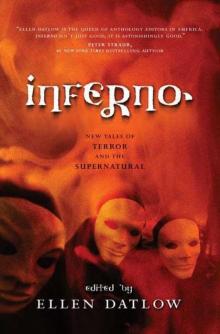 Inferno
Inferno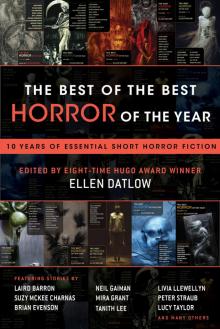 The Best of the Best Horror of the Year
The Best of the Best Horror of the Year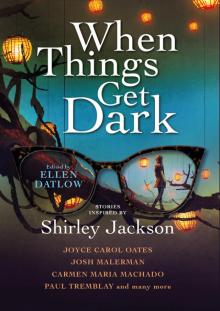 When Things Get Dark
When Things Get Dark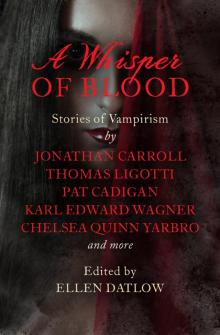 A Whisper of Blood
A Whisper of Blood Echoes
Echoes Blood Is Not Enough
Blood Is Not Enough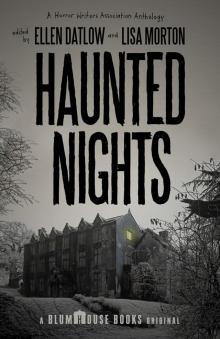 Haunted Nights
Haunted Nights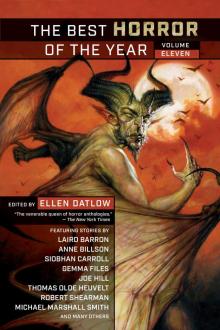 The Best Horror of the Year Volume Eleven
The Best Horror of the Year Volume Eleven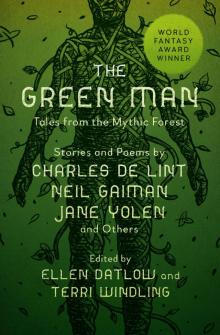 The Green Man
The Green Man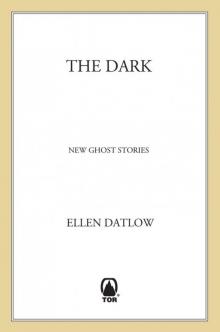 The Dark
The Dark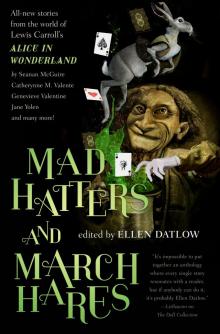 Mad Hatters and March Hares
Mad Hatters and March Hares Nebula Awards Showcase 2009
Nebula Awards Showcase 2009 The Devil and the Deep
The Devil and the Deep